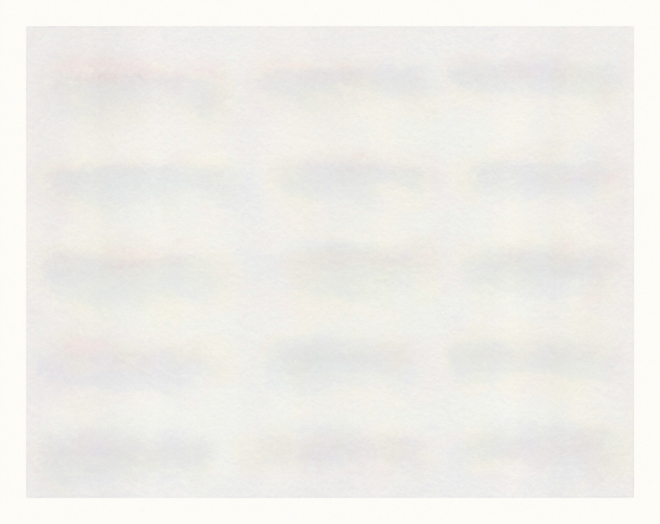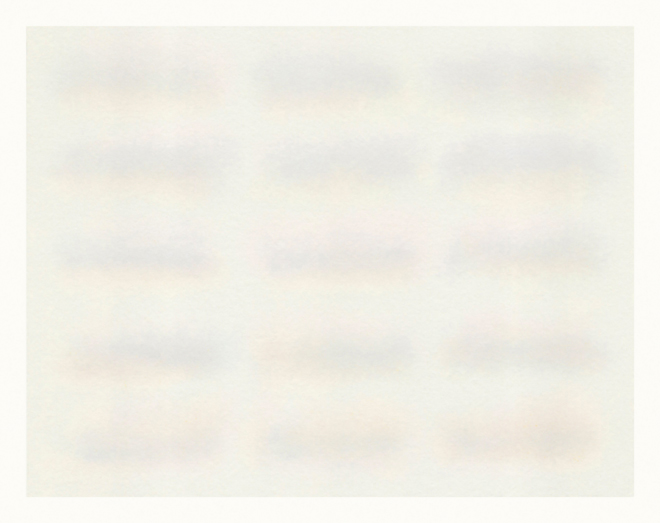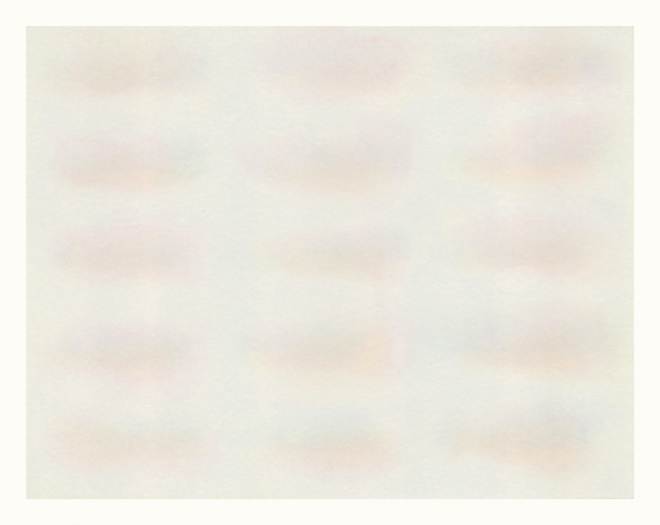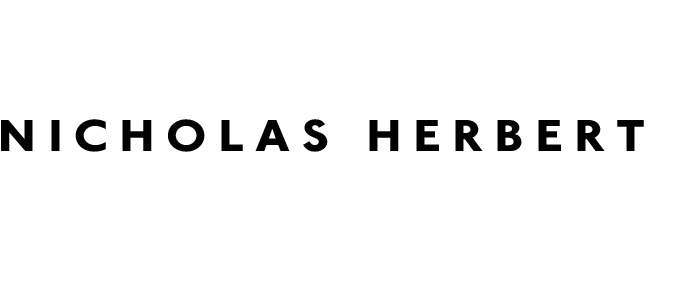Artist’s Statement – Pneuma, new paintings 2024
The way we assess, view and think about time, both in our relationship to the past, and at an individual and personal level through our own remembered experiences, has always been at the core of my work. I am fascinated by ancient history; by our need to discover, document and understand the deep past to uncover our human story; and in particular by the way in which archaeologists often have to extrapolate this from what fragmentary evidence might remain. What is left to us after decay and the passage of time have overwritten their own effects on something we later view, often incomplete, influences how we make judgements about the reality of the past. One way or another, my artworks have always been about fragments of lived experience recalled, shared memories remembered and the physical remains of the activity of painting itself, the final viewable surface.
Thinking about what is left must inevitably lead us to think about what has been lost, not just artefacts and buildings, but innumerable generations of humanity. Things are probably even more transient than we would like to think, and yet somehow something remains; bits of the story do survive over millennia to both capture our interest and perhaps also to confound us about our journey to the present. The fact that over time everything changes, some things are erased, eroded or buried, others crumble, decay or are wilfully destroyed, that impermanence is the norm and our species’ sense of indestructibility and on-going supremacy an illusion, means that the idea of the residual, both historical and personal, is more central to our emotional lives than we might at first think. I started the ‘Residual Trace’ project as a series of paintings in the mid-nineties to explore what these ideas meant to me personally and how they might inform, even direct, what I made. In late 2022, after ten years of solely concentrating on drawing the landscape, I made the decision to explore this subject matter through non-referential painting once again. Seeing one’s past work through the prism of elapsed time offers new insights and developmental perspectives, as well as new resolutions to old challenges. For me, at least, an emerging path into future work is laid out and potential revealed for deeper inquiry into those fundamental ideas that have always been important to me and continue to underpin my art practice.
Ultimately, a return to lyrical abstraction allows the viewer a greater degree of interpretative flexibility, and the paintings can convey more universal ideas that my previous landscape drawings perhaps cannot. Like those drawings, these recent paintings benefit from some degree of contemplation: colour emerges, the indistinct sharpens up, a space to think opens out. For me, when there is no evident figurative narrative, however, paintings are able to point beyond themselves to ideas that are more fundamental to our shared human experience, perhaps questioning our answers rather than answering our questions. The viewer has room to fashion their own more individualised narrative by the interpretation of what is visually available, not unlike the archaeologist, who, confronted only by what remains, must piece together a plausible historical hypothesis.
‘Pneuma’, the title of my current and ongoing corpus of work on paper within the Residual Trace series is also the title of this exhibition. The word pneuma in ancient Greek had a variety of meanings, some more literal such as ‘breath’ or ‘air in motion’ in the sense of something essential to life, and also some more philosophical such as ‘ghost’ or ‘the immortal soul’. For the Stoics, pneuma was also seen as a force that organises matter, thereby existing in inanimate objects. In the Christian New Testament, written in Koine Greek, pneuma appears 385 times and is usually rendered as ‘spirit’, but mostly it means specifically the ‘Holy Spirit’. The word usefully seems to encompass many possible spiritual interpretations and ideas, directional without being too didactic or constraining.
The artworks themselves are the product of a reductive and refining process of painting and iteration, the resolving visual language emerging out of a larger body of prior paintings in the overarching series. These paintings have become ever more pared back, delicate and ethereal, challenging the eye to look with real purpose. In particular, their colouration intensifies the longer these paintings are viewed. Colours that perhaps were not evident on initial inspection slowly become apparent, and eventually some evidence of visual vibration can materialise, as after-images subtly overlay the whole. To me they feel otherworldly, even quasi-religious, dealing with ideas of both the temporal and the eternal, of loss and yet of the hope of something more profound beyond the everyday.
The way the constituent elements are spatially set out in these paintings is deliberately grid-like, formal and repetitive, like a museum drawer full of artifacts that on first glance appear almost identical, yet on closer inspection each item is in fact quite different. It is these small, relative differences of perception that are important. And it is in the way that specific colours and their interactions slowly emerge more distinctly as the painting is viewed – revealing each similar yet clearly unique component – that animates the eye across the surface and draws the viewer into the painting’s internal rhythms, its perpetual state of visual metamorphosis, its soft flux. This particular property of ordered repetition is a counterpoint to the spiritual, alluding to systems and ontology, organisation and classification, to the world of science – the polar opposite of faith, the sacred or the numinous. Visual repetition and regularity might also remind us of some fundamental things that have uninterrupted continuity or periodicity, such as breathing, a pulse, cellular structures, the diurnal cycle, neural networks, fast radio bursts from a distant galaxy and so on. Viewers can of course construct their own list and therefore their own interpretative context.
On a more technical note, these artworks are all made with thin colour glazes of professional grade lightfast acrylic paint on acid-free, archival cartridge paper (these are not watercolours). Each colour is laid down individually after the previous layer has dried. There are then two overall finishing layers. The first is a thin coating of diluted transparent Davy’s Grey acrylic pigment that subtly modifies and unifies the colours and surface. The final layer is a thinned-out layer of micaceous iron oxide in a heavy body acrylic emulsion. This gives the work a subtle overall granularity and ‘etching-like’ quality, depending on the dilution. It also helps give the edge of the painting sharper definition.
This corpus is still evolving, albeit very slowly. Within the boundaries of Pneuma’s quite minimal visual language, as it is currently defined by these paintings, there are continuing possibilities for deeper examination of the sensory interplay between variations of colour, tonality, types of mark and their distribution. For me, Pneuma has a degree of resolution that, while not an endpoint, is certainly a sufficiently contained and meaningful poetic and emotive visual language to be fertile ground for future exploration, while still remaining firmly within its particular restraints and disciplines.
Nicholas Herbert
April 2024
PNEUMA - Essay by David Boyd Haycock
As familiar as I am with Nicholas Herbert’s previous work, his new series still proved a big surprise. I had first encountered his small, mixed media paintings of the Chiltern landscape in 2016. They were intense and rather brooding, with an intriguing quality of light seen through darkness. I liked them immediately.
The works in Pneuma were very different. They are light, bright and ethereal; at moments they appear almost not to be there at all. But they are not images of nothing. On my second time of studying them in conversation with the artist, a remark attributed to the French composer, Claude Debussy, came to mind: ‘Music is the silence between the notes.’ It’s an enigmatic statement, but equally, these are enigmatic, rather haunting images. They are the artistic equivalent, perhaps, of the sound to be heard between the notes in a piece of music. They are reminiscent, too, of Robert Rauschenberg’s rubbed-out drawing, Erased de Kooning, and John Cage’s minimalist ‘silent’ composition, 4’ 33”.
Although Herbert admits that, in the process of creating the series, he liked the way they gradually became ‘ever more not there,’ we are looking at something. What we are seeing, in three hazy columns of five, are small oblong glimpses of colour. Each painting in Pneuma shimmers, as if from behind a screen. Caught in the correct light, the paper – or is it the paint? – appears to glisten. They evoke a colour sequence of human DNA, or one of the ‘museum drawers full of artifacts’ that Herbert references in his own statement on his work: objects that ‘on first glance appear almost identical,’ yet which on closer inspection reveal themselves to be each quite different, distinct, unique.
As faint, sometimes, as it is, the colour in these paintings is everything. It is what makes each one work. Or, occasionally, not work: Herbert destroys those that don’t. Each one is a careful yet uncertain experiment, as he tests the boundaries of what might be possible. He knows exactly what he is looking for.
Appropriately enough, given my thoughts of Debussy and John Cage and the sound of silence, on contemplating Pneuma for the first time I seemed to hear music. I make no claim to be synaesthetic. This is not a sensation I remember having experienced from a picture before. But, as Herbert explained to me, when a painting ‘works’ for him,
it ‘sings’. Its physical self enacts on my own physical self in a purely aesthetic and visual way. I experience a heightened physical sensation of excitement and I feel at one with it. I also recognise when that ‘singing’ is not present. The actual process of making a painting perhaps rests more on getting it to ‘sing,’ to have a sense of its own internal rightness.
Pneuma has been a revelation to the artist. It is the product of what has been a long artistic journey, one that began over twenty years ago. That process is worth describing.
From the mid 1990s to the early 2000s Herbert lived in the Lake District with his late wife, Annie. There he produced large, Rothko-like colour-field paintings. Yet something wasn’t quite right. Small studies would not scale up into the five or six foot canvases he was making. After a while it became an intractable, insoluble problem. Completely stalled, he stopped painting. Returning south with Annie to live near the Chilterns, she suggested he take up drawing again – that by returning to the fundamental foundation of all artistic practice, he would be propelled forwards. It was the right solution for his painterly crisis.
Drawing en plein air preoccupied him for over a decade. Back in the studio, his pencil sketches evolved into mixed media ‘memories’ – paintings that combined graphite, coloured pencil, soluble crayons, acrylic and pastel. These would become the series of English and Italian landscapes, Silent Spaces and Lightfall, which he exhibited with Alan Kluckow Fine Art in 2016 and 2019.
Yet despite the success of these series, and the powerful images he had created, Herbert was still searching. He was seeking the right way to fully express what was a very personal emotion artistically. An important moment came in the summer of 2022. That year Sean Scully chose one of his paintings to include in a group exhibition, ‘Hidden UK, Hidden Ireland,’ which he was curating at Flowers Gallery in London. Taken from Herbert’s ‘Amalfi Series,’ it was a recollection of the harbour at Capri. ‘It was very atmospheric,’ as Herbert describes it, ‘quite high key, and in its way quite abstract.’
Born in Dublin in 1945, Scully grew up and studied art in England before moving to the US. He is widely considered one of the world’s most important abstract artists, recently exhibiting alongside Gerhard Richter. As Scully explained of the twenty artists he had selected for the Flowers Gallery show,
For the most part, they make something with their hands, that is material based, coaxing an image with a body, into being – working, not so differently from other painters throughout history. I haven’t actually curated an exhibition, I’ve chosen work and people who interest me, and put them together, with myself included [...] I wanted to bring what I could of this work together, and shine a light on it.
Seeing his picture in Scully’s exhibition reanimated Herbert’s long-standing interest in abstraction. ‘It reminded me why I originally painted,’ he explains. Abstraction was, he saw again, ‘a powerful way of changing the relationship between the viewer and the painting. When you paint a narrative – even my landscape paintings – you already have a context: it’s a landscape. I saw a need now to move beyond any sort of context.’ Shortly after the Scully show ended, Herbert chanced to see one of his own large works from the late 1990s. ‘And I looked at it, and I thought, I need to go back, I need to look at this again. I loved it when I did it, and it reminded me of why I did these things. And I felt that [...] I had to return to that kind of looking, painting in that way again.’
Looking at photographs of the Scully show, the thing that stands out about the Amalfi painting is its smallness in comparison to the works around it. Because one thing Herbert had discovered in his years of drawing was that he did not need to work to a grand scale to create images of intense feeling. And this was not all he had learnt from his decade long period exploring the English and Italian landscape. Many of the techniques and materials he has used in Pneuma are ones that come from those works. They were the bridge to where he stands now. ‘I recognise that I’ve finally got to the place I’d wanted to be ten, fifteen years ago,’ he tells me. ‘In a funny way, the landscape work unlocked that, but I don’t really know how.’ But it’s a fundamental realization. As he continues,
With Pneuma, I recognised that I had arrived at an important and unexpected solution in visual language that was an answer to myself as an artist. It was something that I had been searching for for years. It wasn’t just an aesthetic resolution – perhaps one of many possibilities. Rather, it was a complete resolution of me uniquely. These works are me; they speak of me, and for me. I find that I now understand myself fully in terms of a visual language. This is me.
These seemingly simple yet in fact deeply complex paintings are an arrival, the expression of an artist who has finally found himself. ‘In my end is my beginning,’ as T.S. Eliot put it.
David Boyd Haycock, Oxford April 2024.
About the Author
David Boyd Haycock grew up in Boston, Lincolnshire, and Ripon, North Yorkshire, wide-open places where he developed a deep love of both the British landscape and British history. From Ripon Grammar School he went to St John’s College, Oxford, to read ‘Modern History,’ and then to the University of Sussex for an MA in the History of Art. Fascinated by the archaeological landscape of Avebury in Wiltshire, he wrote his PhD thesis on the eighteenth-century English antiquary, Dr. William Stukeley.
The ancient landscape of standing stones, chalk figures, rolling Downland and the sea were an inspiration for a number of early twentieth century British artists, and David’s first book was a short biography of Paul Nash (Tate Publishing, 2002). This was followed by a group biography of Nash and a number of his young contemporaries at the Slade School of Art in London, A Crisis of Brilliance: Five Young British Artists and the Great War (2009). He has continued to research this field of late nineteenth- and early twentieth-century British art with two further books, Lucy Kemp-Welch: Painter of Horses (2023) and Brilliant Destiny: The Age of Augustus John (2023). He has curated a number of exhibitions based around these interests for Dulwich Picture Gallery, Poole Museum, Salisbury Museum, the Russell-Cotes Art Gallery, the National Horse Racing Museum, and Pembroke College, Oxford. He has also written for a number of commercial galleries, including David Messum Fine Art, the Piano Nobile Gallery, and Alan Klukow Fine Art. David lives with his wife and two children in Oxford.



